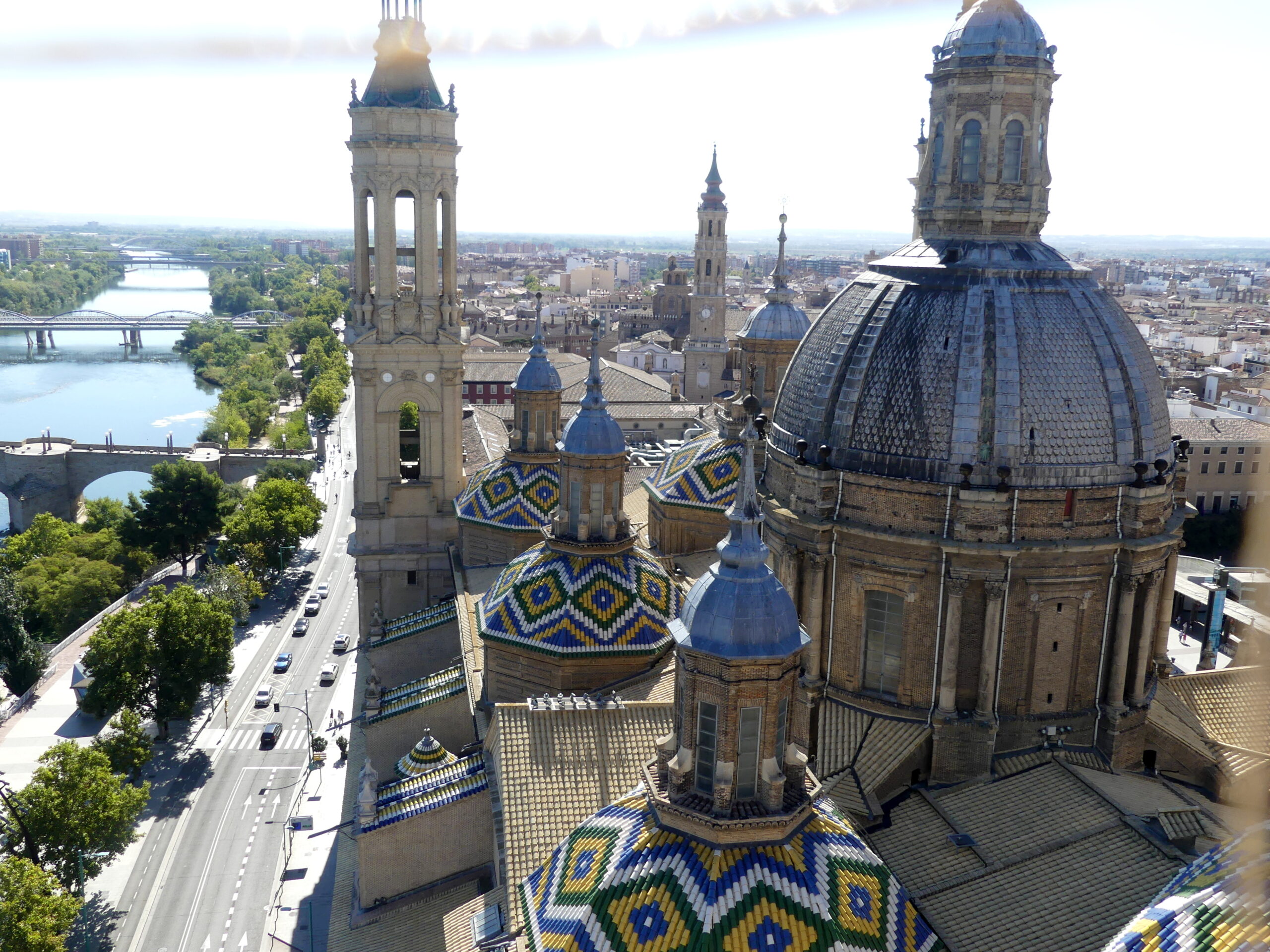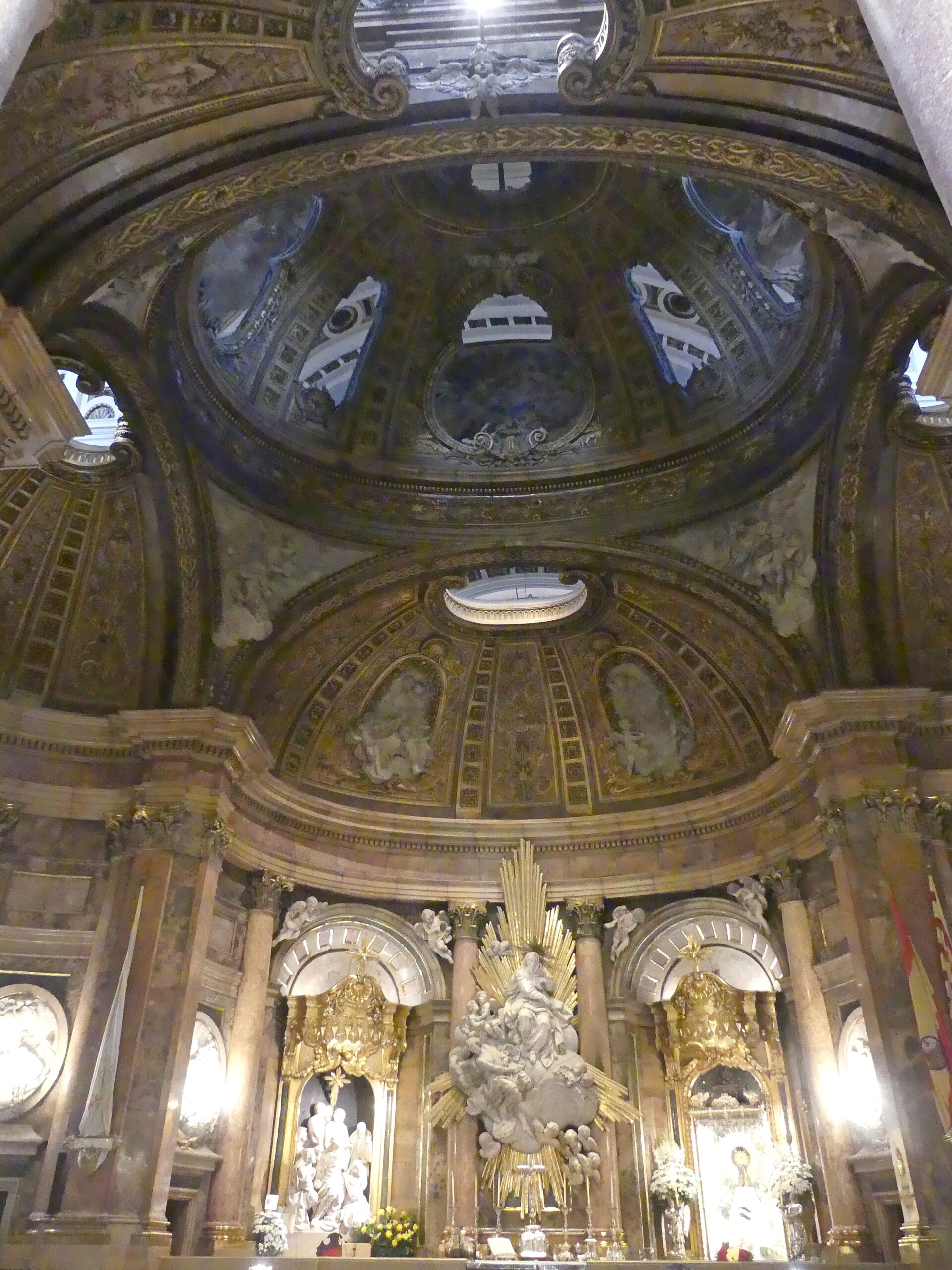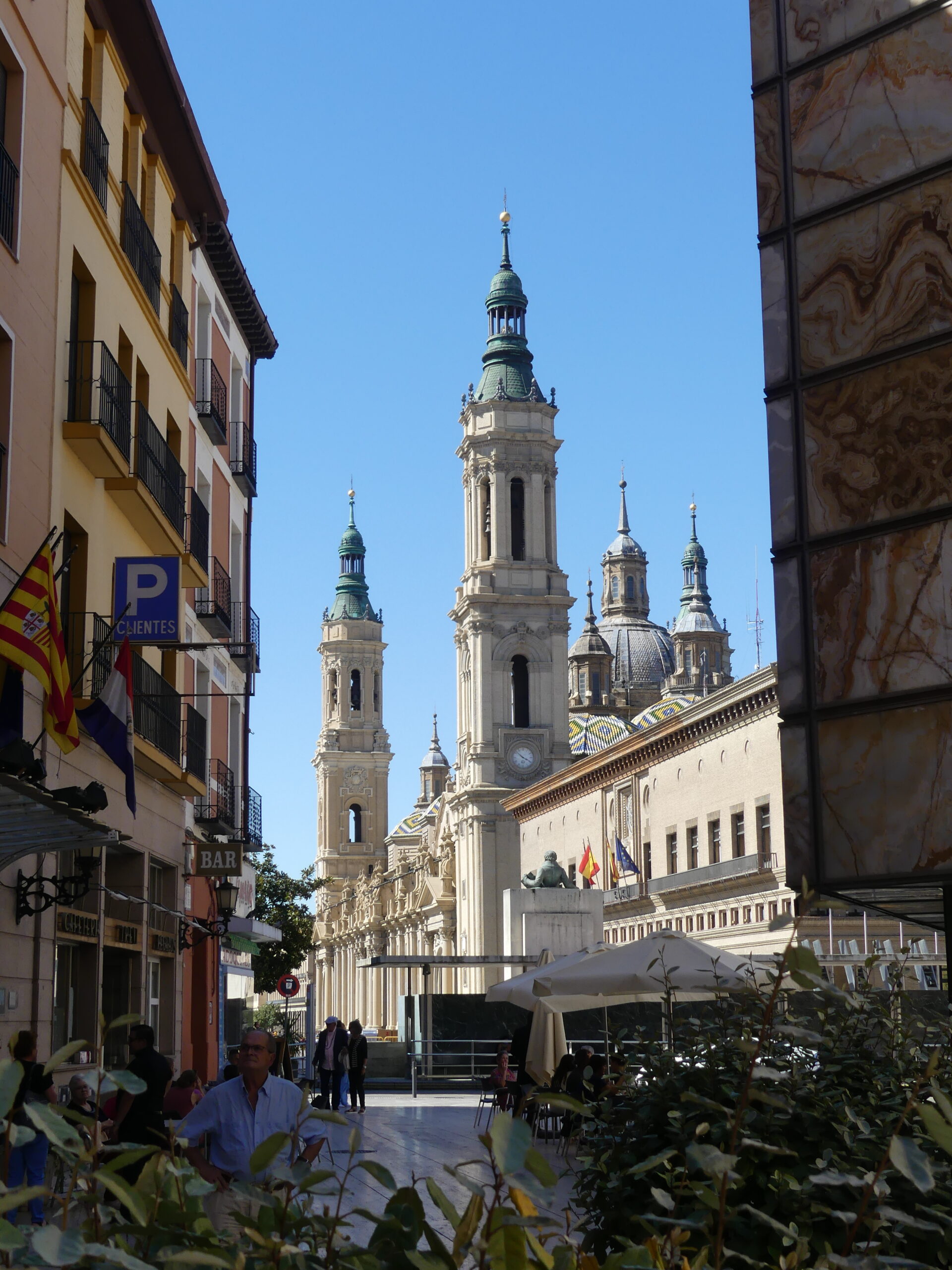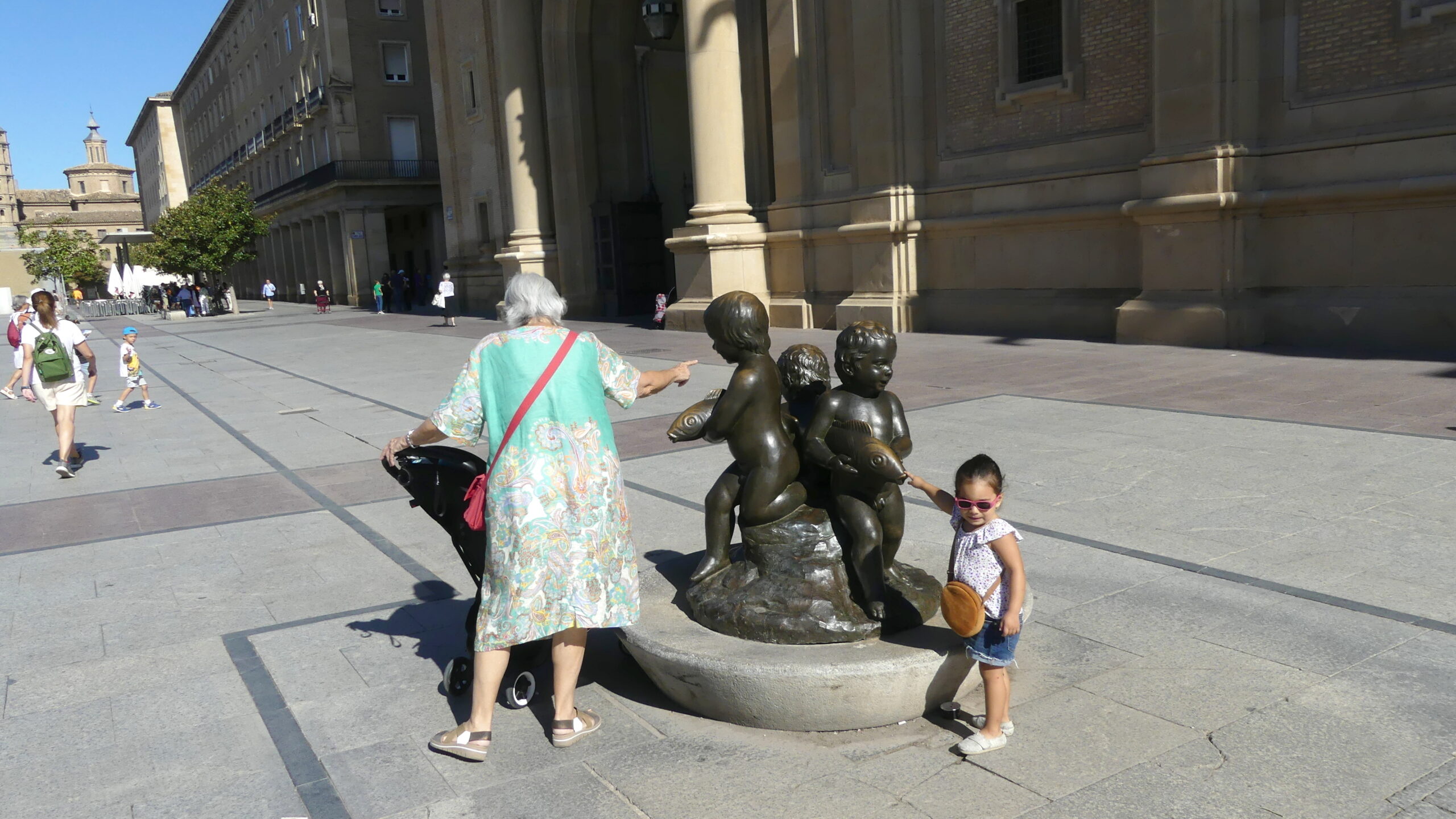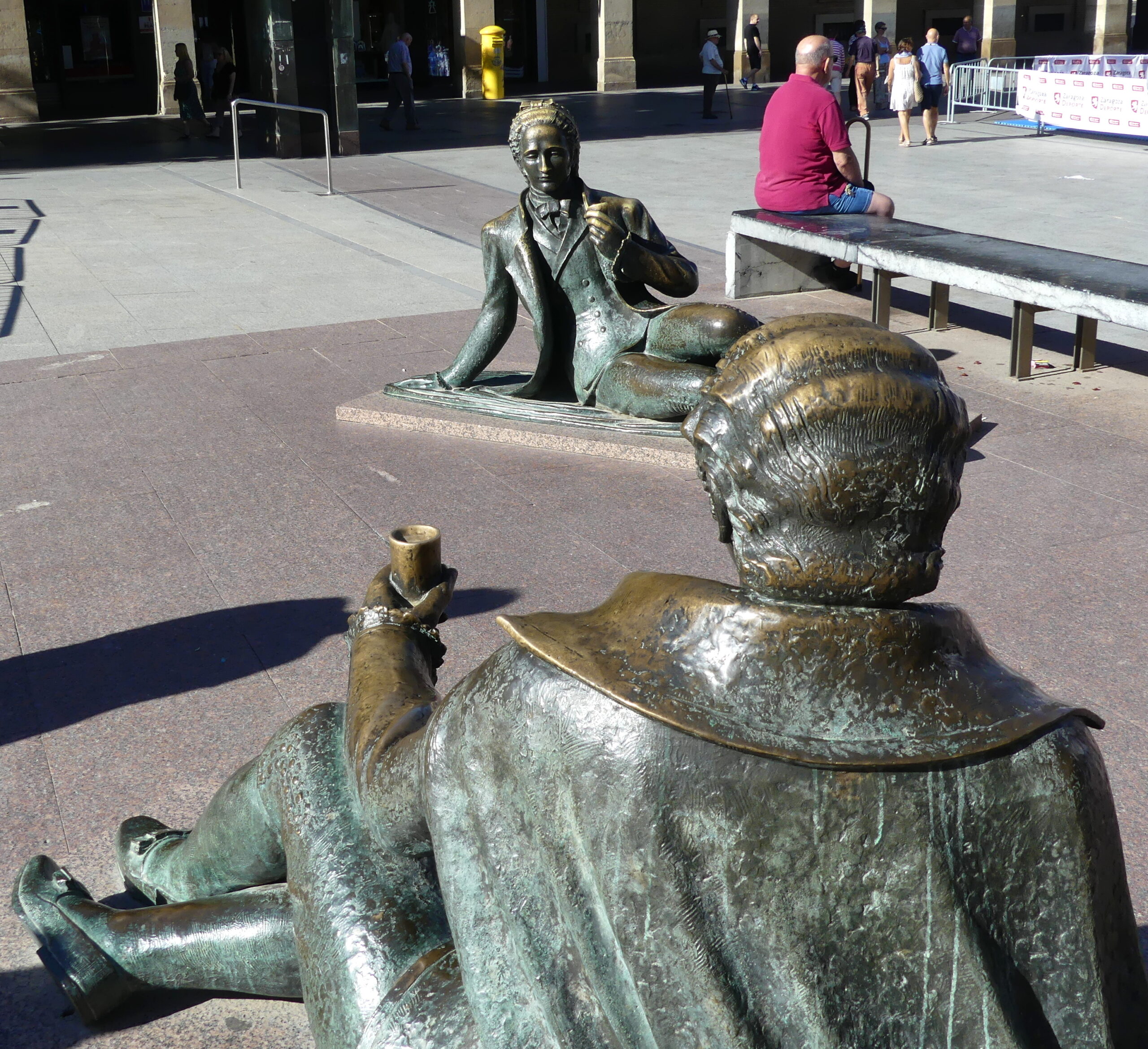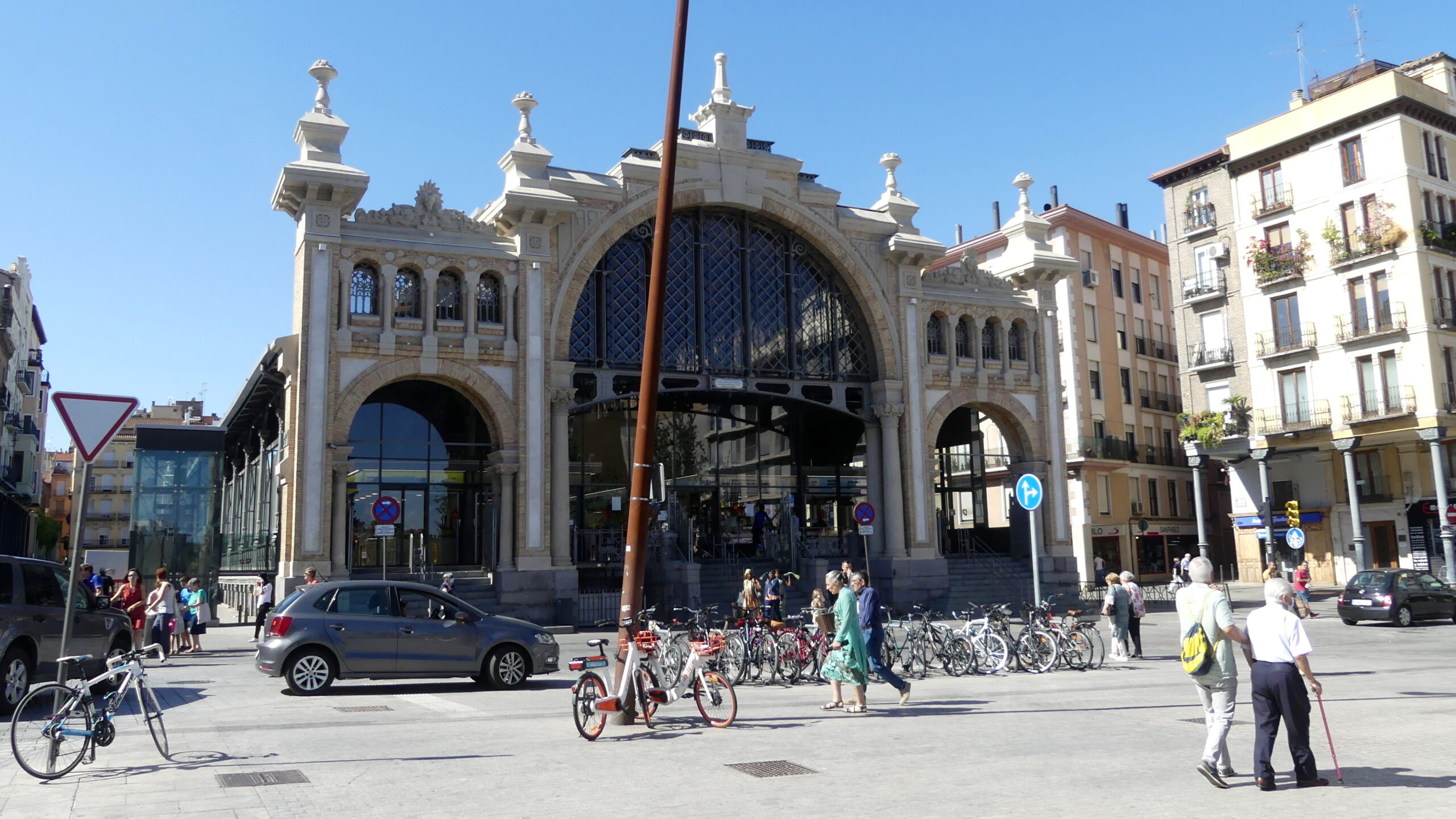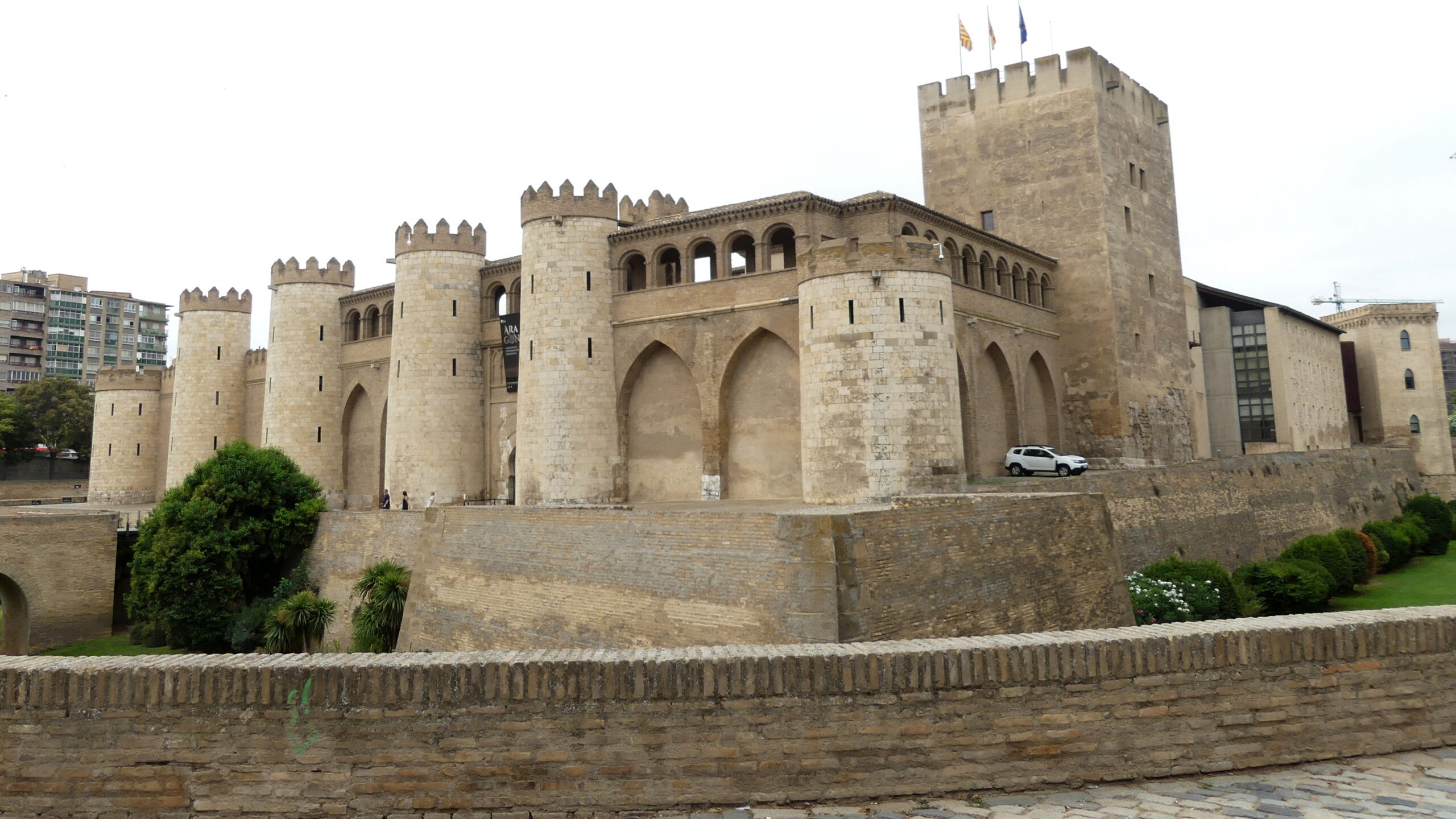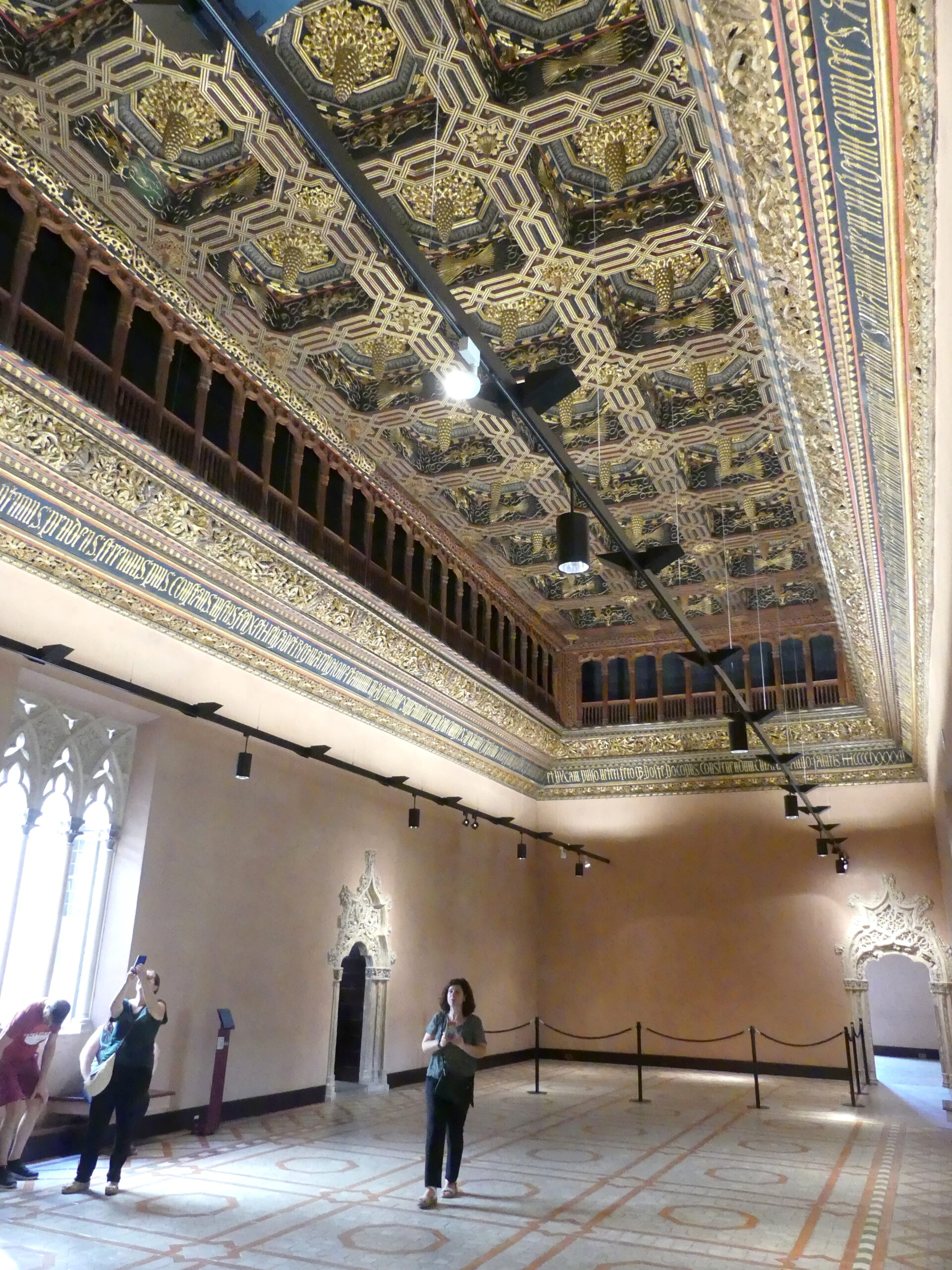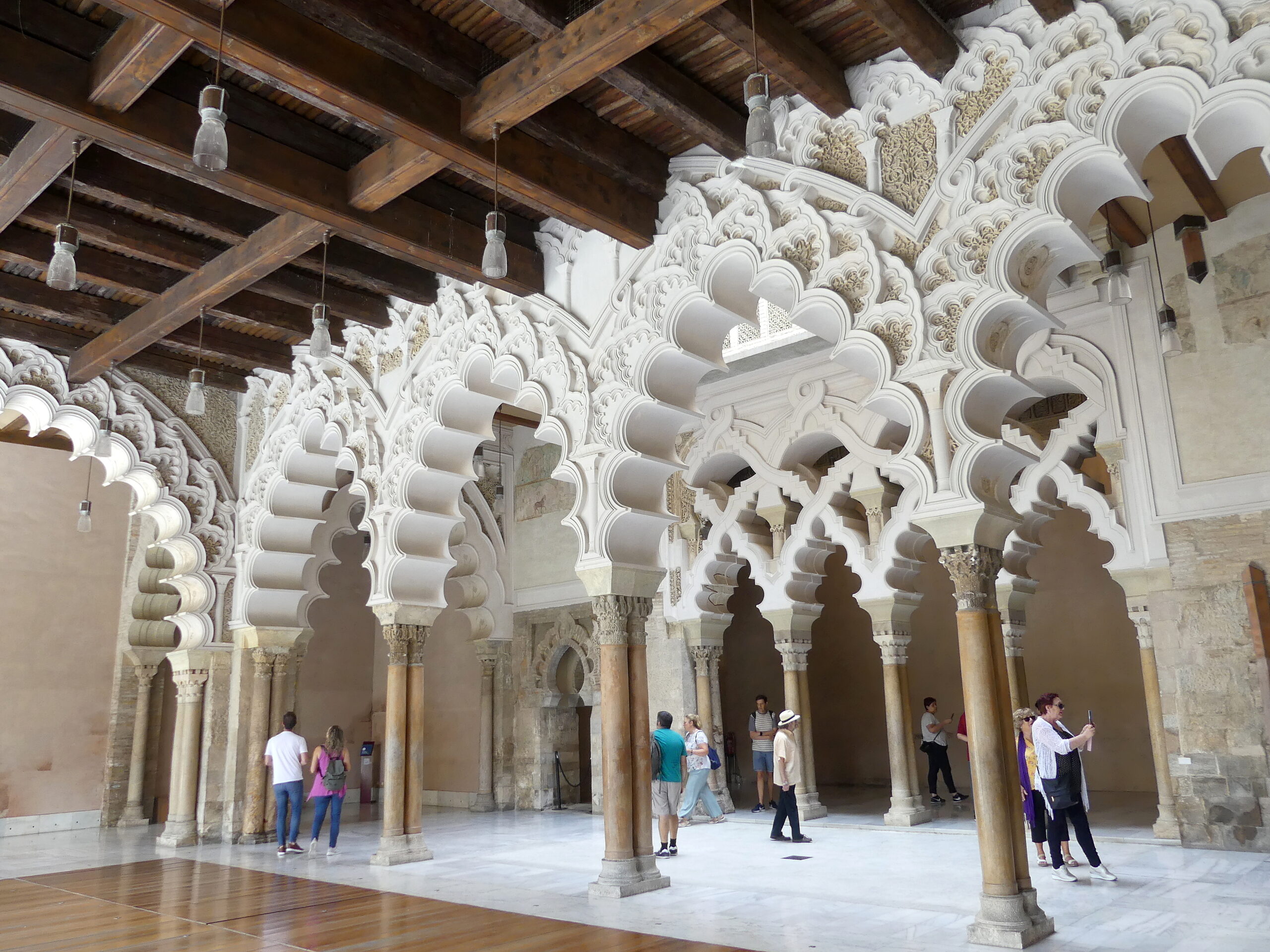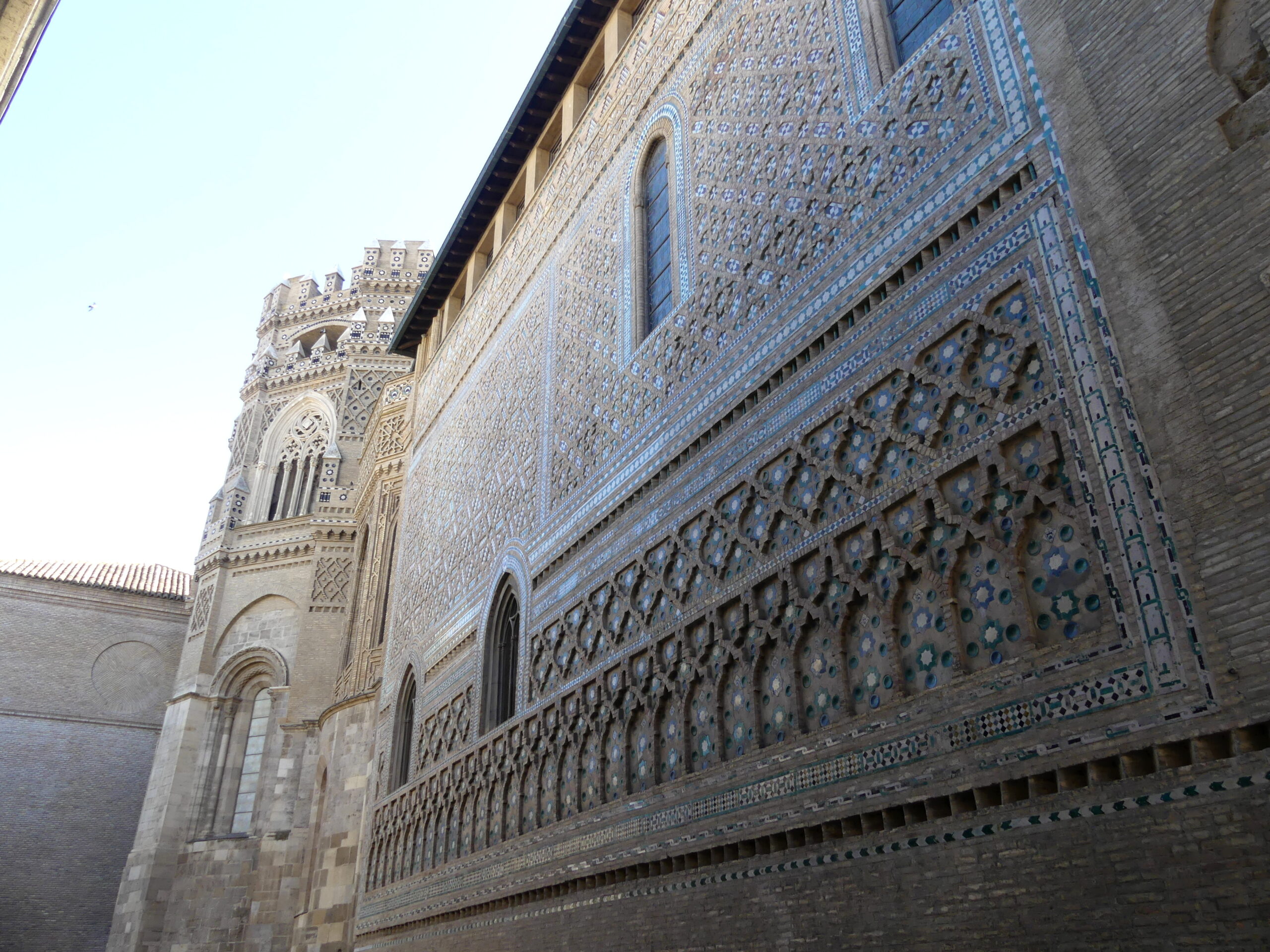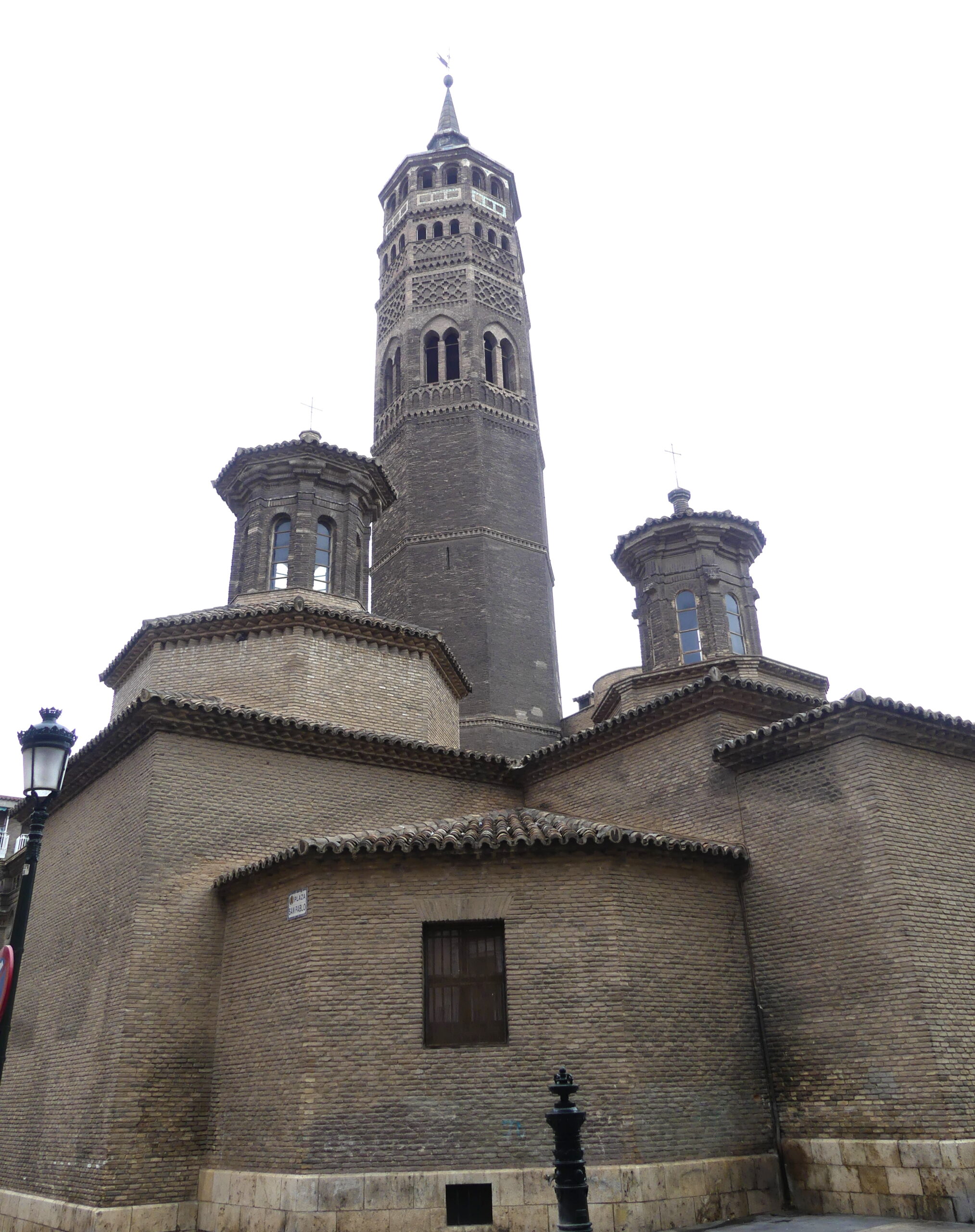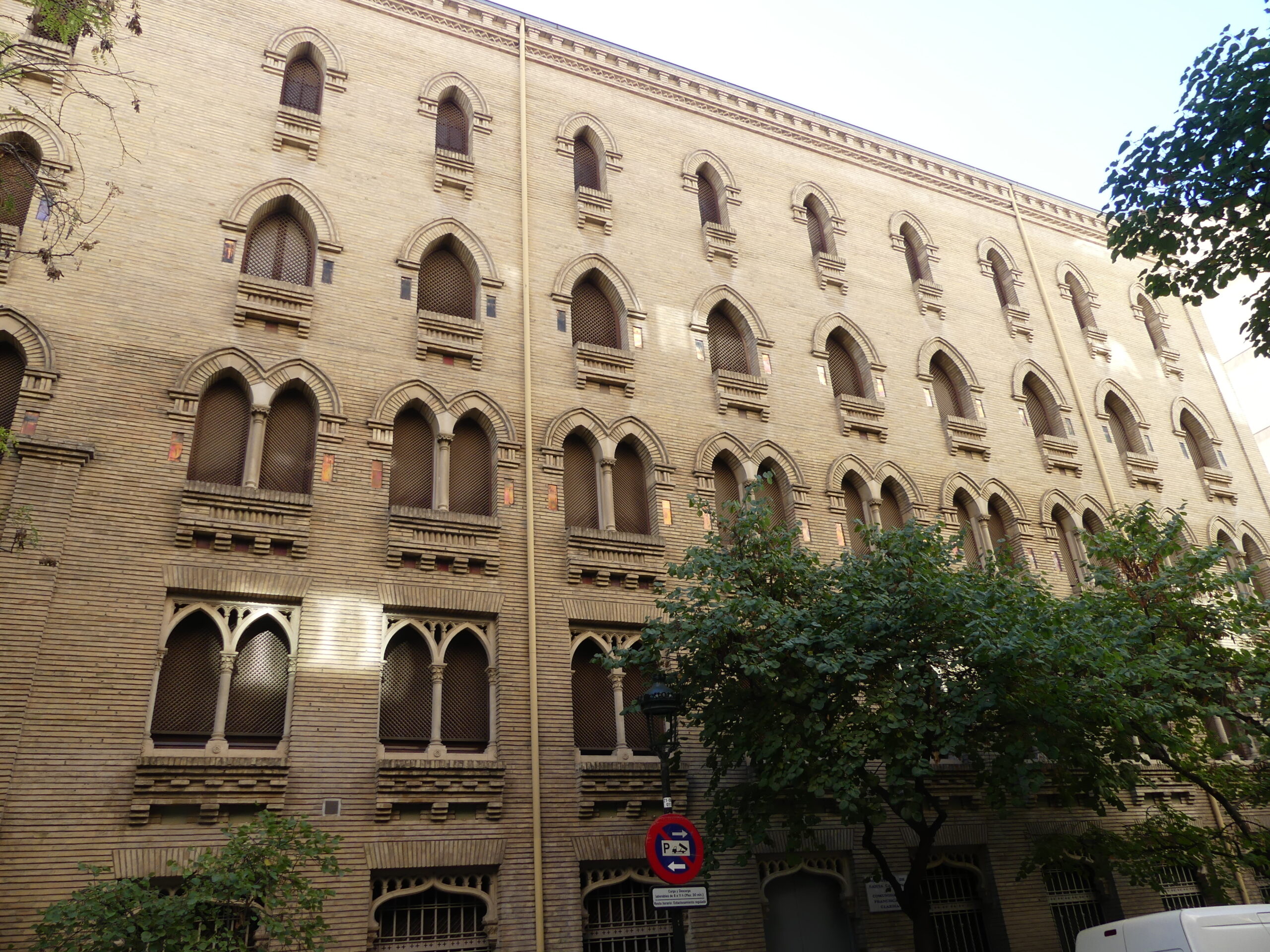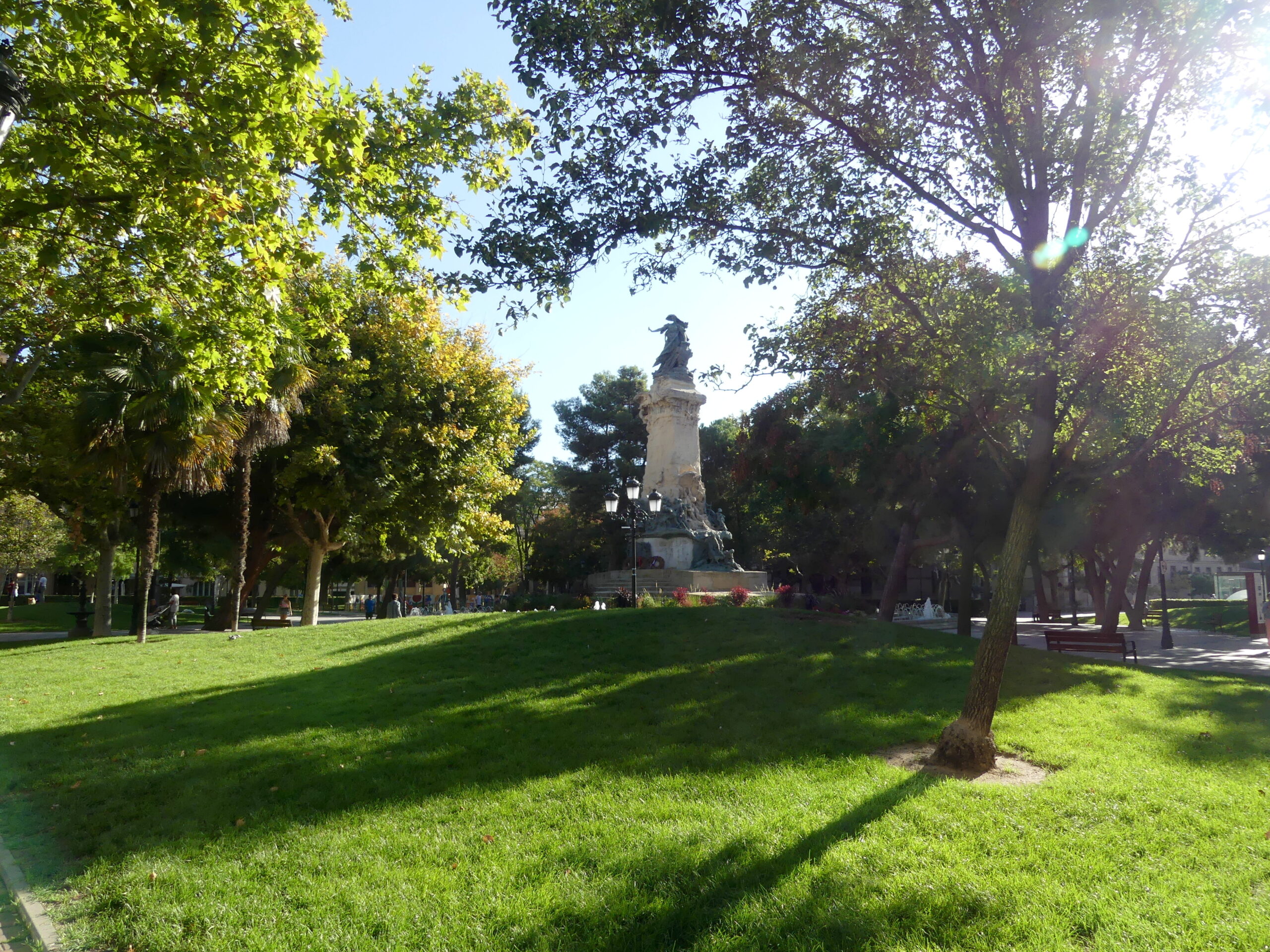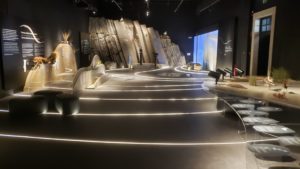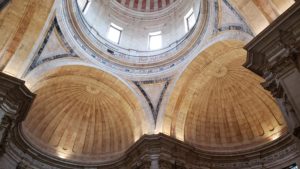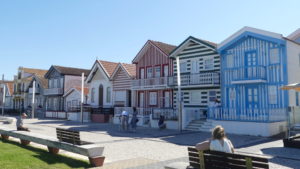In brief: It’s easy to busy oneself with the two millennia of history in the central city, from Mary’s pillar to the Moors’ outpost. It’s also ideal for just relaxing.
The central city of Zaragoza in northeastern Spain seemed a very pleasant, relaxing town. Charming tree-lined streets connect with wide boulevards and plazas, replete with diverse cuisine and drinking opportunities, in general priced moderately. Even in the oldest parts, extensive parkland, especially along the Ebro River, invites one to take life easy. It almost seems a shame that in a small part of that center, superb churches and monuments with World Heritage status lure visitors like us. We could easily visit such grandeur in a few days, but one could enjoyably add more time for the pleasantries.
The heart of the old city is the Basilica of Pilar. This magnificent altar there honors Mary’s appearance in an angelic vision to St. James (or San Tiago) on this very site in 40 AD, two millennia ago.
This special circumstance is why, unusually, Pilar is one of two cathedrals in Zaragoza. Not only did Mary appear, but she left behind a pillar (pilar) of jasper and a 39 cm (15 inch) wooden image of her that have been protected by Zaragozans ever since. You can just see them draped within the niche to the right of the central statue of her, sheathed in glory (and overlit in the altar’s darkish cavern). The ornate open canopy of the altar shows some of the vaulted rooftop of the church beyond.
Atop one of four towers of the Basilica of Our Lady of Pilar, we could see much of the old city and admire the lovely Ebro River parkland. From this foreshortened view of the 17th century Baroque church, it’s harder to grasp the extent of the whole structure as one can see from the plaza around it. It is 130 meters (over 400 feet long) and about half as wide, with 11 picturesque cupolas like these along the roof.
This is perhaps our favorite view of the Basilica of Pilar, contrasted by a typical building of the old town with a plethora of wrought iron balconies and a bar on the lower floor. We enjoyed a splendid lunch of Syrian food while staring at the other cathedral at the end of a street with similar buildings.
The huge plaza anchored by the Basilica can feel like a playground for adults and children. While the grandmother points out features of the statue to the child in the stroller, this little one replaced a trio of boys who were also charmed by the bronze figures with fish. But they moved on to play with other such statues.
As for the adults in the Pilar plaza, these bibulous gentlemen from the 18th century as well as the mysterious man in red fit well into the other playground of bars and restaurants opposite the holy Basilica. During our visit, a celebration of athletic games also filled much of the plaza with activity and music. An open air market bustled for hours.
This central Mercado in Zaragoza was just a block from the main plaza of Pilar and that weekend open air market. It shows off an eclectic style – a bit of art nouveau and a bit of beaux arts – and faces an eclectic collection of antiquities. It is found at the end of a brief section of Roman walls adorned by a statue of Augustus Caesar and opposite a Romanesque-Mudejar church. The small stalls of the market are built into the long aisles, and were swarmed by buyers at mid-day.
Upriver from the Basilica, at the far extent of the old town outside the old walls, was the other big structure in town, the 9th century fortified Moorish palace of Aljafería.
We had known about the Moorish occupation and influence over southern Spain, but were surprised to find such a grand palace this far north, as well as the strong influence of Moorish architecture throughout the city.
This is your first view of the imposing outpost from one millennium ago as restored to its medieval glory – if you come at it the right way, along the grid of streets west of the old town.
That square tower to the right is the oldest part, probably 9th century. In the 19th century, it received the name of Troubadour Tower when it was made the setting of a Spanish play by Gutierrez called the Troubadour. Verdi turned that story into his Il Trovatore.
Aljafería’s top floor had been largely transformed since the late Middle Ages by the Catholic Kings of Aragon. Somewhat wrecked in the Peninsular Wars against Napoleon, both Moorish and Catholic parts have been restored. Here is a grand greeting room that the Kings used, with one of many splendidly decorated ceilings.
This Moorish hall and its enchanting archways – along with many decorated panels and a three-story, murky and atmospheric prayer room – still stand opposite Aljafería’s simple Islamic garden.
If you want an example of Mudejar style, you can’t find any better or more elaborate than this, an exterior wall of the second Cathedral on a somewhat hidden side along a narrow street. The tower base seems simple Gothic, but the top erupts into a profusion of Islamic decoration.
On a quiet grid of streets outside the original city walls, between the old center and the old fort, squats the 13th/14th century church of San Pablo.
In a pastiche of styles over the centuries, this unusual exterior view seems to trace the Gothic interior back to Romanesque origins and forward to the octagonal tower from the 14th century with Mudejar decoration (i.e., Christian artisans imitating Islamic models).
Among the many charming buildings along the streets dating from the 19th century are many brick structures like this in Mudejar style. Notice the varied windows as it rises.
This large rectangular park near our hotel is home to the Zaragoza Museum. Oddly there are no cafes within the park, but many along the adjacent streets look at it, like the one where we spent a very enjoyable evening. Across the city many plazas, large and small, also bustle with diners and drinkers. Outposts like these could easily distract a visitor from the antiquities.
(To enlarge any picture above, click on it. Also, for more pictures from Spain, CLICK HERE to view the slideshow at the end of the itinerary page.)


